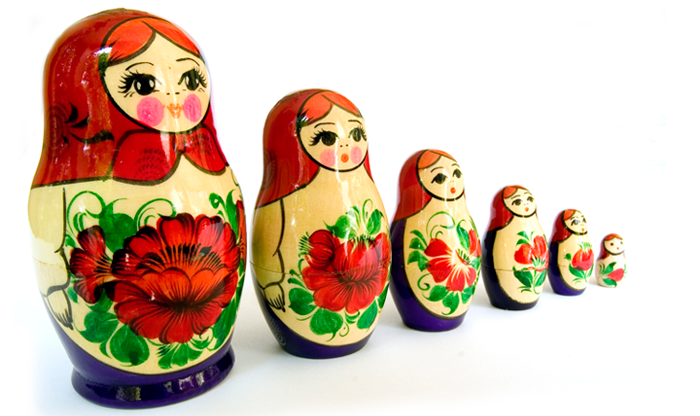United States citizens have been unable to adopt children from Russia since 2013, when a Moscow-instituted ban ended an active 22-year program that placed more than 60,000 Russian-born children with adoptive parents in the U.S. This is not news, however, the inactive program is receiving renewed interest and scrutiny thanks to this week’s revelations about Donald Trump, Jr.,’s meeting with a Russian attorney during the 2016 presidential campaign season. That meeting, Trump, Jr., initially said, revolved around the U.S.-Russia adoption program. But a July 10, 2017 New York Times headline stated, “When the Kremlin Says ‘Adoptions,’ It Means ‘Sanctions,” and we have since learned that the meeting more certainly touched on topics beyond adoption. So, what is the history of Russia’s intercountry adoption program with the U.S., and why is it such an important lynchpin in D.C.-Moscow relations?
Russian Adoption By the Numbers
Russia formalized its international adoption program in the middle of 1991. That year, 12 children were adopted by American families. That figure grew quickly, topping 1,000 children by 1994, rising to 4,292 in 2001 and reaching a peak of 5,862 adoptions in 2004. (International adoption reached an overall historic high that year, with a total of 22,884 foreign-born children adopted by U.S. families.)
Soon after, however, the number of Russian-born children adopted by U.S. families started dropping sharply year after year. Just 748 such adoptions were completed in 2012. The following year, Vladimir Putin signed a law banning U.S. families from adopting children born in Russia. The U.S. Department of State (DOS) logged 250 adoptions completed in 2013 and two in 2014—all of which were in-process before the ban—and zero thereafter.
The Russian Adoption Process
Adopting from Russia was an involved, expensive process that required two or even three international trips (or a lengthy stay). Prospective parents did not formally receive a referral before embarking on their first trip, to meet the child. On a region-by-region, or even case-by-case basis, some families would receive photos, a medical report, or even a video before traveling; other families traveled “blind.” Paperwork requirements and court procedures often varied by region, as well, and could involve extensive updating between parents’ first and second trips.
Every Russian adoption required parents to obtain their child’s visa in Moscow. Given the high cost of traveling to and staying in Russia’s capital city, this conclusion to the adoption journey added a significant time and cost. In Adoptive Families’ 2012-2013 Adoption Cost and Timing Survey, readers reported totals of $40,000 to more than $50,000 for a typical adoption in Russia—the highest average cost for any sending country at the time.
Negative Perceptions of International Adoption in Russia
As U.S. citizens continued to adopt thousands of Russian-born children, many of whom had medical and behavioral special needs, the Russian public and lawmakers grew increasingly uncomfortable about the number of “orphans” finding homes abroad. The Russian government began tightening restrictions for adoption agencies, adopting parents, and children eligible for adoption; it also began promoting domestic adoption. These efforts were generally successful and, in 2008, more children were adopted by Russian citizens than by families in other countries. At the time, president of the adoption advocacy group Joint Council on International Children’s Services (which has since ceased operations) Tom DiFilipo said, “I think that’s a good thing for children.”
Most Russian adoptees found safe, loving homes with families in the U.S. over the duration of the country’s international adoption program. However, 19 children tragically died in the care of their adoptive families here in America. Each case was widely publicized in Russia and several prompted talks of moratoriums.
Two of the most widely publicized cases of heartbreaking deaths or mistreatments of Russian adoptees were those of Chase Harrison and Artyom Savliev. In 2008, months after Chase was adopted from Russia, the toddler died of heatstroke while left alone in a car for nine hours. His adoptive father, Miles Harrison, was acquitted in the case. As Judy Stigger, LCSW, adoption therapist and clinical director of Adoption Learning Partners at The Cradle, in Evanston, Illinois (at the time, Stigger was the agency’s director of international adoption) explained, the outrage in Russia over the death of this young child was heightened by cultural differences; the not-guilty verdict was confusing to Russians because their legal system “doesn’t allow for acquittal when something has clearly gone wrong.”
In 2010, Torry Ann Hansen put seven-year-old Artyom on a flight back to Russia with a note that read, “I no longer wish to parent this child.” Hansen has since been ordered to pay child support.
The Magnitsky Act and the Dima Yakovlev Law (Russian Adoption Ban)
On December 28, 2012, Russian President Vladimir Putin signed the Dima Yakovlev Law (Russian Federal Law No. 272-FZ), which banned U.S. citizens from adopting Russian children. The ban went into effect on January 1, 2013. At the time, several hundred families were in the process of adopting from Russia, including at least 200 who had already been matched with or met the children they were hoping to adopt.
While the law was formally named after Dima (or Dmitry) Yakovlev, the birth name of young Chase Harrison, it is generally accepted that the law was a direct retaliation for the Magnitsky Act passed by the U.S. This law, signed by President Barack Obama on December 14, 2012, froze the assets of Russians implicated in human rights abuses and denied them visas to enter the United States. It was named after a Russian lawyer, Sergei Magnitsky, who uncovered a tax fraud scheme that involved high-ranking Russian officials. Magnitsky died in Moscow in 2009, after being held in prison without trial for nearly a year. The legislation that includes the ban on Russian adoption has been commonly referred to as the “Anti-Magnitsky” law.
When news first broke of the June 9, 2016 meeting between a Russian lawyer and Donald Trump, Jr., Jared Kushner, Paul Manafort, Russian-American lobbyist Rinat Akhmetshin, and possibly others, the younger Trump claimed in a brief statement that the meeting was about adoption: “We primarily discussed a program about the adoption of Russian children that was active and popular with American families years ago and was since ended by the Russian government, but it was not a campaign issue at the time and there was no follow up.”
Less than 24 hours later, Trump, Jr., revised this claim, noting that the meeting with Natalia Veselnitskaya, a lawyer with Kremlin connections, was set up with the promise of receiving damaging information about presidential candidate Hillary Clinton. According to his account, however, “It quickly became clear that she had no meaningful information. She then changed subjects and began discussing the adoption of Russian children and mentioned the Magnitsky Act.”
This comment seems to underscore this direct link between Russian’s adoption program and U.S.-imposed sanctions, as noted in the July 10 New York Times article about Russia’s use of international adoption as leverage to encourage the U.S. to lift sanctions against Russian officials. And thus, adoption and the well-being of thousands of children were once again used as a pretense and a means to try to enact political revenge.



